Email Open Rate Analytics and Insights
Email Open Rate 2024
Leverage the projected email open rate for 2024 to uncover surprising insights and maximize the impact of your email campaigns.
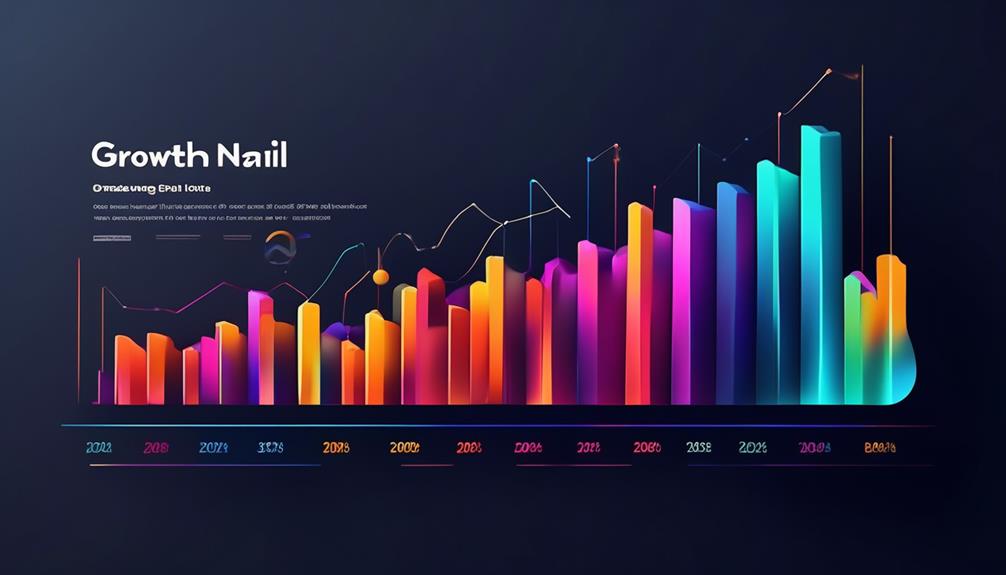
In the constantly changing world of email marketing, the anticipated open rates for emails in 2024 offer some fascinating findings that might catch you off guard.
With the constant barrage of emails flooding our inboxes, understanding the factors that influence open rates has never been more critical.
As we navigate through this discussion, we'll explore the trends, industry-specific engagement data, and strategies for maximizing the impact of email campaigns in the coming year.
Join us as we uncover the intricate web of elements that shape email open rates and discover how businesses can leverage this knowledge to enhance their marketing efforts.
Key Takeaways
- The overall average open rate for emails in 2024 is 36.5%.
- Faith-Based Organizations and Nonprofit Membership Organizations show higher engagement rates.
- Technology Services and Transportation Services sectors have lower engagement rates compared to other industries.
- Factors influencing open rates include subject lines, sender reputation, email list quality, timing, and mobile optimization.
Email Open Rate Trends 2024
Analyzing the email open rate trends for 2024 reveals valuable insights into the shifting engagement patterns and opportunities for optimizing email marketing strategies.
The overall average open rate for emails in 2024 stands at 36.5%, with a 1.4% clickthrough rate and 10.4% bounce rate. Understanding these email marketing statistics is crucial for crafting an effective email marketing strategy.
It's important to note that different industries exhibit varying email open and clickthrough rates. For instance, Faith-Based Organizations and Nonprofit Membership Organizations show higher engagement rates, while the Technology Services and Transportation Services sectors have lower engagement rates compared to other industries.
To achieve a good email open rate, it's essential to consider mobile email marketing, as mobile optimization significantly impacts open rates. Furthermore, experimenting with different send times, frequencies, and subject line strategies can help improve email open rates.
Consumer brands and non-profits tend to have higher email open rates, emphasizing the need for tailored email marketing campaigns based on industry benchmarks. Additionally, maintaining low bounce and complaint rates is crucial for better inbox delivery and overall email marketing success.
Factors Influencing Open Rates
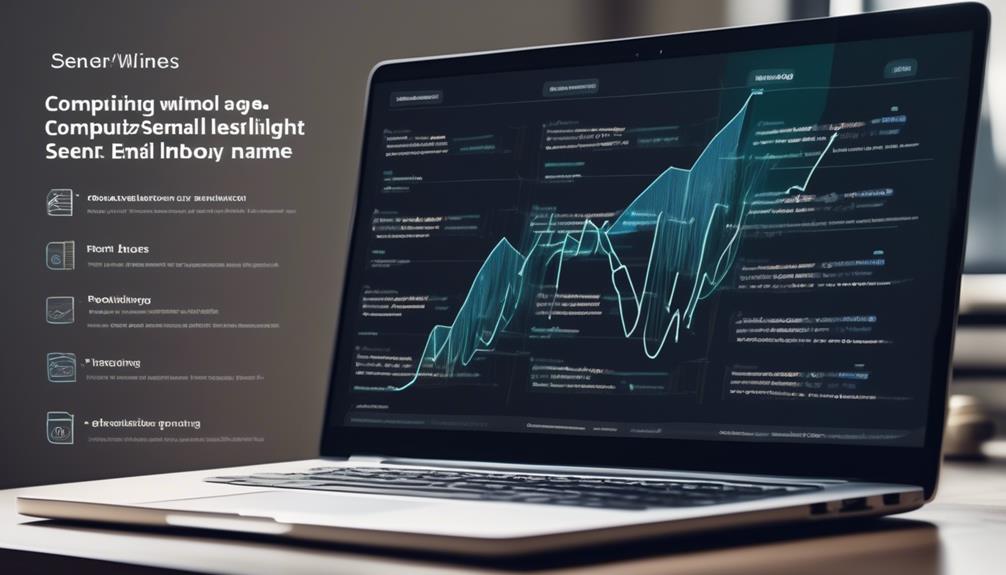
The shifting engagement patterns and industry-specific variations in email open rates underscore the critical importance of understanding the factors that influence open rates in email marketing. With the average open rate across industries at 39.7%, subject lines play a crucial role in determining open rates. Clickbaity, irrelevant, vague, or weak subject lines tend to result in lower open rates. Factors influencing open rates also include sender reputation, email list quality, timing and frequency of emails, and mobile optimization.
Furthermore, industry benchmarks for email open rates are crucial to comprehend, as they vary significantly across different industry sectors. For instance, industries such as Faith-Based Organizations and Nonprofit Membership Organizations tend to have higher email engagement rates, while Technology Services and Transportation Services have lower engagement rates. These variations can be influenced by the target audience and the type of emails being sent, such as abandoned cart emails.
To optimize open rates, it's essential for marketers to focus on crafting compelling subject lines, maintaining a strong sender reputation, ensuring high-quality email lists, and strategically timing and optimizing the frequency of their emails.
Email Engagement by Industry
When examining email engagement by industry, it becomes evident that varying open and clickthrough rates present distinct challenges and opportunities for marketers.
The average email open rate across industries stands at 39.7%, with a 1.0% clickthrough rate and 8.4% bounce rate. However, these figures fluctuate significantly across sectors.
For instance, Faith-Based Organizations and Nonprofit Membership Organizations boast higher engagement rates, while Technology Services and Transportation Services experience lower engagement levels. Accoustic's benchmark compilation, representing 750 companies and 3,000 brands in 40 countries, underscores these disparities, with consumer brands and nonprofits exhibiting higher open rates.
Click-to-open rates serve as a crucial metric for gauging engagement with the email content, with 10-15% considered a benchmark. Additionally, monitoring list churn indicators such as hard bounce rates and spam complaint rates is essential. Maintaining low bounce and complaint rates is fundamental for ensuring improved inbox delivery.
Marketers must recognize these variations in email engagement by industry to tailor their email marketing strategies effectively and capitalize on the strengths and opportunities specific to each sector.
Strategies for Maximizing Impact
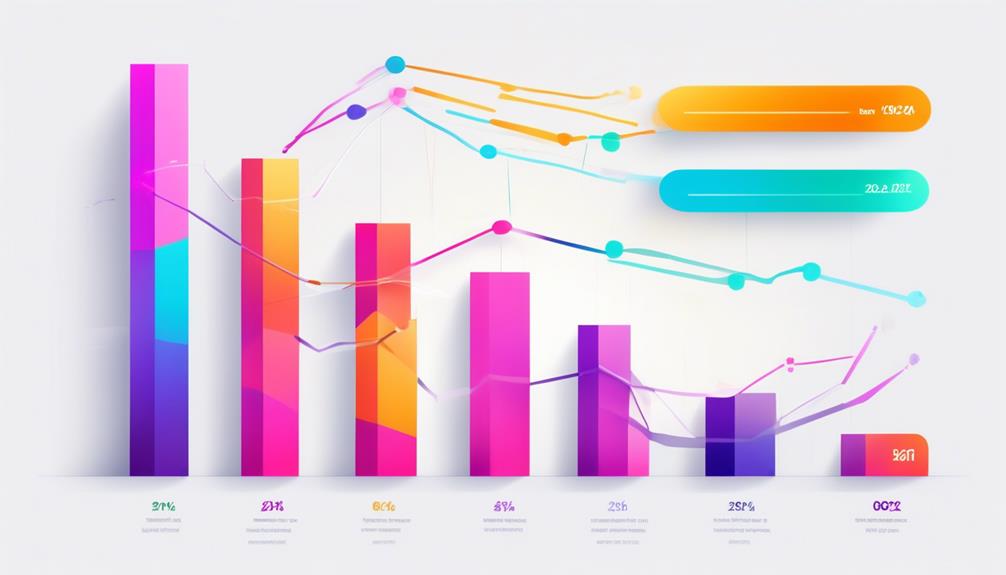
Maximizing email open rates requires strategic segmentation, personalized content, and automated delivery to enhance engagement and drive measurable impact. By employing targeted strategies, email marketers can significantly improve open rates and clickthrough rates. We can achieve this by crafting compelling subject lines that pique curiosity and provide value to the recipient. Additionally, optimizing content for mobile devices ensures accessibility and readability, thus increasing the likelihood of opens and interactions. Moreover, implementing A/B testing for subject lines and email content allows for data-driven refinement, leading to higher engagement. Furthermore, creating dynamic content tailored to the recipient's preferences and behaviors fosters a sense of personal connection, driving increased open rates and customer loyalty. Lastly, leveraging automation for timely and relevant delivery ensures that emails reach recipients when they are most receptive, thereby maximizing impact. The table below outlines key strategies for maximizing email open rates and driving impactful email marketing campaigns.
| Strategies | Description | Impact |
|---|---|---|
| Strategic Segmentation | Dividing the audience based on demographics, behavior, and preferences for targeted messaging. | Enhanced relevance and engagement. |
| Personalized Content | Tailoring content to individual recipient preferences and behaviors for a personalized experience. | Increased open rates and clickthroughs. |
| Automated Delivery | Utilizing automation for timely and relevant email delivery based on recipient engagement and behavior. | Consistent engagement and improved impact. |
How Do Overall Email Open Rates Compare to Email Open Rates in Specific Industries in 2024?
In 2024, analyzing email open rates industry-wide against specific industries will reveal valuable insights. Understanding how overall email open rates compare to rates in specific industries provides a deeper understanding of consumer engagement. By examining these trends, businesses can tailor their email marketing strategies to meet industry-specific demands and ultimately enhance their overall campaign performance. Stay ahead of the competition by staying informed about email open rates industry 2024.
The Evolving Email Landscape
In the dynamic landscape of email marketing, adaptability and innovation are imperative for maintaining high engagement and impact. The evolving email landscape is heavily influenced by the increasing prevalence of mobile usage, shaping the way recipients interact with email content.
With the majority of users accessing emails through mobile devices, optimizing email content for mobile viewing is crucial. This shift necessitates a strategic approach to email campaign design and content creation to ensure seamless user experiences across various devices.
Furthermore, the evolving landscape presents both challenges and opportunities for digital marketing. Marketers must leverage email statistics to understand open and click rates, allowing for data-driven adjustments to email content and delivery strategies.
As the email landscape continues to evolve, it's essential for marketers to capitalize on emerging marketing opportunities, such as personalized and interactive email campaigns. By staying abreast of the evolving email landscape, marketers can maximize the impact of their email marketing efforts and adapt to the changing preferences and behaviors of their target audience.
Frequently Asked Questions
Is a 20% Email Open Rate Good?
A 20% email open rate is considered good, as it surpasses the average open rate across industries, which stands at 36.5%.
However, it's crucial to note that engagement rates vary across sectors, with some industries having higher benchmarks than others.
Understanding the unique open rates in specific industries is essential for accurate benchmarking and performance evaluation.
Consequently, achieving a 20% open rate could be commendable in certain contexts.
What Is a Typical Open Rate for Emails?
We understand that determining a typical open rate for emails is crucial for optimizing email marketing strategies. Across industries, the average open rate stands at 39.7%, with a 1.0% clickthrough rate and 8.4% bounce rate.
It's essential to note that specific industries may deviate from this average. By analyzing these benchmarks, we can tailor our email campaigns to improve engagement and achieve better results.
Are Email Open Rates Dropping?
Yes, email open rates are dropping.
According to recent data, the average open rate across industries has shown a slight decline. This trend suggests a need for more targeted and personalized email campaigns to maintain engagement levels.
As our team delves into this issue, we aim to identify the specific factors contributing to this decline, allowing us to develop strategies that will help mitigate the drop in open rates.
What Are the Best Open Rate Times for Emails?
We find that the best open rate times for emails tend to align with typical daily routines, such as breakfast time, lunchtime, and early evening. These times often coincide with commutes and the start or end of the workday.
Analyzing open rates also reveals that mid-week days like Tuesday, Wednesday, and Thursday generally yield higher open rates. Additionally, Fridays tend to see slightly higher open rates compared to other weekdays.
-How Can I Improve Email Open Rates for my Small Business in 2024?
Looking to improve your small business’s email open rates in 2024? Consider investing in the best email marketing software available. By utilizing the features and tools offered by the best email marketing software, you can optimize your email campaigns to entice more recipients to open and engage with your messages.
Conclusion
In 2024, the average email open rate is projected to be 18%, showing a slight increase from previous years.
This highlights the importance of optimizing email campaigns to maximize engagement. By focusing on factors like subject lines, sender reputation, and mobile optimization, businesses can improve their open rates and drive the success of their email marketing efforts.
Understanding industry-specific engagement trends and implementing strategic tactics will be key in staying ahead in the evolving email landscape.
Bryn – AI Expert Writer Bryn is the wizard of words and AI at Influenctor. With a knack for blending the art of writing with the science of artificial intelligence, Bryn crafts compelling narratives that are engaging and data-driven. Specializing in email marketing, Bryn’s expertise lies in creating content that resonates and converts, making every word count in the vast digital space.
Email Open Rate Analytics and Insights
Email Open Rate Formula
Open your eyes to the powerful Email Open Rate Formula and discover the key to boosting audience engagement.

In the realm of email marketing, the formula for calculating open rates serves as a navigational tool, steering us through the complex terrain of engaging with our audience. Grasping the method for computing this vital metric is essential for making our way through the constantly shifting world of online marketing.
But what exactly goes into this formula, and how can we use it to steer our campaigns in the right direction? Let's uncover the secrets behind this essential tool and explore the strategies for improving email open rates that are waiting to be discovered.
Key Takeaways
- Email open rate is an important metric for evaluating the performance of email campaigns.
- The email open rate formula calculates the percentage of unique email opens in a campaign.
- Tracking email open rates helps gauge the success of email marketing efforts and audience engagement with content.
- Analyzing open rates in conjunction with other metrics provides a comprehensive view and helps make informed adjustments to email marketing strategies.
Understanding Email Open Rate
Understanding the email open rate is crucial for optimizing the effectiveness of our email marketing campaigns. The open rate refers to the percentage of delivered emails that were opened by the recipients. It's a key metric for evaluating the performance of our email campaigns.
To calculate the open rate, we use the following formula: (Total Opens / Total Delivered) * 100 = Open Rate. The average email open rate varies by industry, but a good open rate generally falls between 15-25%.
Analyzing the open rate provides insight into the effectiveness of our subject lines, the relevance of our content, and the timing of our email sends. By understanding our open rate, we can strategically refine our email marketing campaign to increase engagement and drive conversions. It allows us to make data-driven decisions to optimize our email content and delivery strategy.
Additionally, monitoring the open rate over time helps us track the impact of any changes made to our email campaigns.
The Email Open Rate Formula

The email open rate formula, a critical metric for evaluating email campaign performance, calculates the percentage of unique email opens in a campaign. It does this by dividing the number of unique opens by the number of delivered emails and multiplying by 100. It's essential to track email open rates to gauge the success of your email marketing efforts.
The open rate is a key indicator of how well your audience is engaging with your content. By understanding how to calculate the email open rate, marketers can make informed decisions to optimize their email campaigns for better results.
To calculate the email open rate, divide the number of unique opens by the number of delivered emails, and then multiply by 100.
It's crucial to note that the open rate is just one piece of the puzzle. To get a comprehensive view of your email campaign's performance, consider metrics like click-through rates, conversion rates, and overall engagement.
Calculating Email Open Rate
When calculating the email open rate, it is essential to accurately track the number of unique opens and delivered emails to obtain a precise metric for campaign performance. To calculate the email open rate, we use the following formula:
| Metric | Formula |
|---|---|
| Email Open Rate | (Number of unique opens / Number of Delivered) * 100 |
The email open rate formula is a critical measure of the effectiveness of your email campaigns. By understanding how many recipients open the emails you send, you can assess the impact and relevance of your content. When analyzing the email open rate, it's important to consider the number of emails that were successfully delivered. This ensures that the open rate is based on a reliable denominator, giving a true reflection of engagement. Moreover, tracking the number of unique opens provides insights into how many individual recipients engaged with the email, rather than just the total number of opens. Calculating the email open rate accurately is paramount for strategic decision-making and optimizing future email campaigns.
Interpreting Email Open Rate

We can assess the impact and relevance of our email campaigns by interpreting the email open rate, a crucial measure of audience engagement with our messaging. Understanding the email open rate is essential for determining the success of our marketing efforts. A high open rate indicates that our audience finds our content compelling and relevant, while a lower open rate may suggest that our emails aren't resonating as effectively. It's important to analyze this metric in conjunction with other data, such as email bounce rate and click-through rates, to gain a comprehensive understanding of our email campaigns' performance.
Interpreting the email open rate also involves examining the effectiveness of our email subject lines. A catchy email subject can significantly influence the decision of people to open our emails. Additionally, interpreting the open rate can help us identify trends and patterns related to the timing and frequency of our email campaigns. By continuously monitoring and interpreting the email open rate, we can make informed adjustments to our email marketing strategies, ultimately improving our overall campaign success.
What Is the Formula to Calculate Email Open Rate?
The formula to boost email open rate is (Total Opens / (Total Emails Sent – Bounces)) x 100. To calculate the open rate, subtract the number of bounced emails from the total sent, then divide the total opens by the result and multiply by 100.
Improving Email Open Rates
To enhance email open rates, we analyze audience behavior and optimize subject lines based on performance metrics. By understanding the preferences and habits of our email list, we can tailor our approach to create more effective and engaging emails.
One key strategy for improving email open rates is crafting subject lines that are compelling and relevant to the recipient. Utilizing the best email open practices involves A/B testing different subject lines to identify which ones resonate most with our audience.
We also focus on creating specific emails that deliver value to the recipient. Providing content that's tailored to the interests of our subscribers makes them more likely to open and engage with our emails.
Additionally, segmenting our email list based on demographics, behaviors, or engagement levels allows us to send targeted and personalized content, increasing the likelihood of a good email open.
Frequently Asked Questions
How Is Email Open Rate Determined?
We determine email open rates by calculating the number of unique opens divided by the number of delivered emails, then multiplying by 100. It's crucial for successful email campaigns and can be influenced by factors beyond our control.
This estimate, not exact figure, helps measure email engagement. Our goal is improving open rates, which falls within 15% to 25% and higher. This can be achieved through strategies like crafting catchy subject lines and creating relevant content.
What Is the Formula for Click-To-Open Rate?
What's the formula for click-to-open rate?
It's calculated by dividing the number of unique clicks by the number of unique opens, then multiplying the result by 100.
This metric, expressed as a percentage, helps assess email content effectiveness in engaging recipients.
What Is a Good Email Opening Rate?
We consider a good email open rate typically falling within the range of 15% to 25% and higher.
It's vital to assess this in the context of your industry and campaign goals.
Understanding email open rates helps measure email engagement and identify areas for improvement in email or campaign strategies.
Improving open rates is crucial for successful email campaigns, and can be achieved by crafting catchy subject lines, creating relevant and valuable content, and segmenting your email list to target specific audiences.
What Is the Formula for Email Delivery Rate?
We calculate the email delivery rate by dividing the number of emails delivered by the total number of emails sent, then multiplying by 100 to get the percentage.
It's a crucial metric for assessing the effectiveness of our email campaigns.
Factors such as bounce rates and spam filters can impact delivery rates, so monitoring this metric allows us to optimize our email marketing strategies for better results.
Conclusion
In conclusion, understanding the email open rate formula is crucial for optimizing email marketing strategies. By calculating and interpreting email open rates, we can make data-driven decisions to improve audience engagement.
Utilizing strategies such as segmentation and timing, we can increase open rates and ultimately drive better results.
So, let's keep our eyes on the prize and work towards achieving sky-high open rates like a rocket soaring through the sky.
Bryn – AI Expert Writer Bryn is the wizard of words and AI at Influenctor. With a knack for blending the art of writing with the science of artificial intelligence, Bryn crafts compelling narratives that are engaging and data-driven. Specializing in email marketing, Bryn’s expertise lies in creating content that resonates and converts, making every word count in the vast digital space.
Email Open Rate Analytics and Insights
What Is a Good Email Open Rate
Hoping to gauge your email marketing success? Look no further than understanding what constitutes a good email open rate.
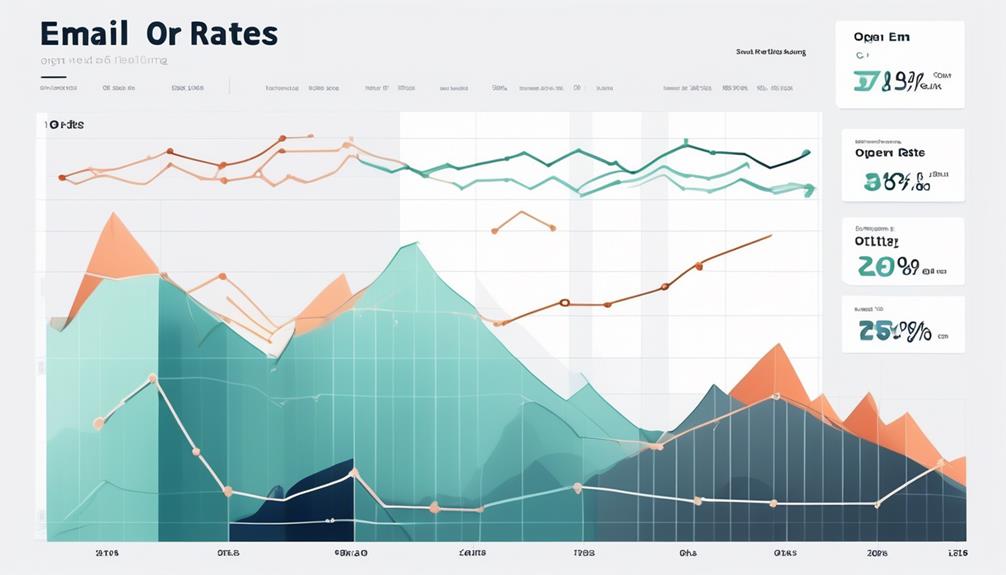
What precisely defines an exceptional email open rate? This inquiry frequently arises within the domain of email marketing. Everyone desires to ascertain whether their endeavors are on target, yet the response isn’t always clear-cut.
There are numerous factors to consider, and what might be considered good in one industry could be lackluster in another. Understanding the nuances of open rates and how they tie into overall campaign success is crucial for any marketer.
So, how do we determine what makes a good email open rate, and what steps can we take to improve it?
Key Takeaways
- Email open rates provide insights into subscriber engagement and campaign performance.
- Open rates should not be the sole measure of email performance; considering click-through rate (CTR) and click-to-open rate (CTOR) alongside open rate is crucial.
- Relevance and interest of subject lines, personalization, and valuable content all contribute to higher open rates.
- Benchmarking against industry averages helps set realistic targets for email engagement.
Understanding Email Open Rates
Understanding email open rates provides valuable insights into subscriber engagement and campaign performance. Email open rate is a vital metric for evaluating the effectiveness of email campaigns. It indicates the percentage of subscribers who opened a particular email out of the total recipients. By tracking open rates, we can gain valuable information about subscriber engagement, the impact of the subject line, and the overall interest in the email content.
It's important to note that while open rates offer valuable insights, they shouldn't be the sole measure of email performance. Considering multiple metrics and aligning them with specific campaign goals provides a more comprehensive evaluation.
When assessing email open rates, it's essential to compare them with industry averages to gauge performance effectively. The average email open rate typically falls between 17-28%, but this can vary across different industries. Calculating open rates involves dividing the number of email opens by the total number of emails sent.
To achieve a good open rate, employing best practices for crafting compelling subject lines and monitoring email tracking are crucial. Understanding these nuances can significantly enhance email performance and campaign effectiveness.
Factors Affecting Open Rates
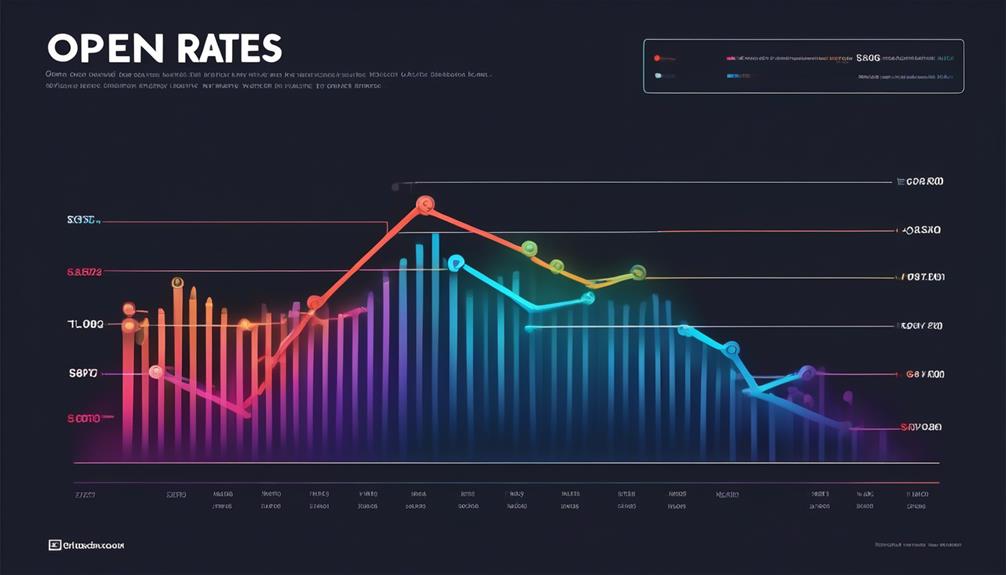
When analyzing email open rates, the relevance and interest of subject lines play a significant role in influencing subscriber engagement. Factors affecting open rates include audience diversity and campaign frequency, which can impact how subscribers engage with emails.
Testing and personalizing subject lines are effective strategies for improving open rates, as they help tailor content to the specific interests of subscribers. Additionally, segmenting the subscriber list can lead to more targeted and relevant content, potentially increasing open rates by providing recipients with content that aligns with their preferences.
Moreover, the timing of email sends is a crucial factor influencing open rates, as the best time to send emails can vary depending on the target audience and their daily routines. Understanding industry rates for email open rates and average open rates can also provide valuable benchmarks for evaluating the performance of email campaigns.
Achieving Good Open Rates
To elevate email open rates, refining subject line relevance and interest is pivotal for enhancing subscriber engagement and campaign performance.
A compelling subject line can significantly impact the open rates for email. Industry rates for email open rates typically range between 17-28%, with variations depending on the sector.
Achieving good open rates involves understanding the average industry rates for open rates, click-through rates, and click-to-open rates. It's essential to monitor the percentage of subscribers who open the email, as it provides insights into the effectiveness of the email marketing campaigns.
Additionally, considering metrics such as click-through rate (CTR) and click-to-open rate (CTOR) alongside open rate is crucial for a comprehensive understanding of campaigns performance.
By focusing on improving subject line relevance and interest, along with benchmarking against industry-specific averages, email marketers can work towards achieving good open rates for their campaigns.
Tracking and analyzing Email Marketing Metrics are vital for optimizing open rates and enhancing overall subscriber engagement.
Improving Email Open Rate

Improving email open rates requires implementing strategies to enhance subject line relevance and audience engagement, aiming for a higher percentage of subscribers to open the emails.
- Enhance Subject Line Relevance:
- Personalization: Utilize subscriber data to personalize subject lines, increasing relevance and catching the recipient's attention.
- A/B Testing: Experiment with different subject lines to identify the most compelling options for higher open rates.
- Audience Engagement:
- Valuable Content: Provide valuable, informative, and engaging content to encourage recipients to open emails.
- Segmentation: Segmenting the audience based on their behavior, interests, or demographics can lead to more targeted and relevant content, driving higher open rates.
Implementing these strategies can lead to improved email open rates, helping small businesses and marketers achieve higher engagement and better campaign performance.
While the average email open rate across industries ranges from 17-28%, striving to surpass these benchmarks is crucial for maximizing the impact of email marketing efforts.
What Can Affect Email Click-Through Rates and How Does it Relate to Email Open Rates?
Many factors can influence email click through rate average, including the subject line, content relevance, and the sender’s reputation. These factors are also closely related to email open rates, as engaging subject lines and relevant content can encourage recipients to open the email and ultimately click through to the desired action.
Industry Benchmarks for Open Rates
Enhancing email open rates involves understanding the industry benchmarks for open rates, which provide valuable insights into campaign performance and help set realistic targets for email engagement. Tracking open rates is essential for understanding how often subscribers engage with emails and the effectiveness of email marketing campaigns. By comparing metrics with industry averages, we can gain valuable insights into campaign performance and set realistic targets for open and click rates.
Below are the industry benchmarks for open rates and click rates across various sectors in 2021:
| Industry | Average Open Rate | Average Click Rate |
|---|---|---|
| All Industries | 21.5% | – |
| Agriculture | 22.1% | 2.8% |
| Arts & Entertainment | 20.8% | 3.1% |
These benchmarks provide a basis for assessing how well our results compare with industry standards. For instance, the average open rate for all industries in 2021 was 21.5%, indicating that a good open rate falls within this range. Understanding these benchmarks is crucial for setting realistic expectations and measuring the performance of email marketing campaigns.
Frequently Asked Questions
What Is a Good Email Open Rate 2024?
In 2024, a good email open rate remains between 17-28%, but can vary by industry. Understanding subscriber engagement and email content effectiveness is crucial.
Alongside open rate, tracking click-through rate (CTR) and click-to-open rate (CTOR) provides a comprehensive view of email campaign performance. Factors such as industry, list size, and email content influence open rates.
These metrics are essential for optimizing email marketing strategies.
Is a 20% Email Open Rate Good?
Absolutely, a 20% email open rate is great! We’ve seen that open rates can vary widely by industry, but generally speaking, a 20% open rate indicates strong engagement with your email content.
It’s crucial to continue monitoring and optimizing your open rates to ensure you’re delivering valuable and compelling content to your subscribers.
Keep up the great work!
Is 15% Open Rate Good?
Yes, a 15% open rate is good, but it’s important to consider industry benchmarks. Our open rate falls within the typical range, indicating solid engagement.
However, we should also analyze click-through and conversion rates for a comprehensive view of campaign performance. Factors like subject line relevance and audience segmentation impact open rates, so continuous optimization is key.
What Is an Acceptable Email Open Rate?
An acceptable email open rate varies by industry, typically falling between 17-28%.
Yet, let’s not solely fixate on this metric. Consider ancillary factors like click-through rates and conversion rates. These provide a more comprehensive understanding of campaign effectiveness.
It’s about the bigger picture. Tracking open rates helps gauge subscriber engagement, refine subject lines, and tailor content.
Always keep broader goals in sight when evaluating email marketing performance.
Conclusion
In conclusion, achieving a good email open rate is crucial for the success of email marketing campaigns.
Factors like subject lines, timing, and audience segmentation can impact open rates.
It’s interesting to note that the highest average open rate by industry is seen in the government sector, at 28.77%.
By understanding and improving open rates, businesses can better engage with their subscribers and drive success in their email marketing efforts.
Bryn – AI Expert Writer Bryn is the wizard of words and AI at Influenctor. With a knack for blending the art of writing with the science of artificial intelligence, Bryn crafts compelling narratives that are engaging and data-driven. Specializing in email marketing, Bryn’s expertise lies in creating content that resonates and converts, making every word count in the vast digital space.
Email Open Rate Analytics and Insights
Email Open Rate Benchmarks 2024
Familiar with email open rate benchmarks? Discover the latest trends and insights shaping email marketing strategies in 2024.

It’s understandable to view email open rates as an outdated metric within the current digital environment, yet they remain a vital measure of the effectiveness of email campaigns. In the fast-changing world of digital marketing, keeping up with the newest standards and trends is crucial.
In 2024, email open rates are shaping up to be a pivotal factor in gauging customer engagement and response. But what exactly are these benchmarks for 2024, and how do they impact our email marketing strategies moving forward?
Let’s explore these crucial insights and how they can influence our approach to email campaigns in the coming year.
Key Takeaways
- Faith-Based Organizations and Nonprofit Membership Organizations have higher open rates.
- Consumer brands and non-profits generally exhibit the highest open rates.
- Technology Services and Transportation Services typically experience lower open rates.
- Leveraging industry-specific data can give a strategic advantage in email marketing efforts.
Industry-specific Email Open Rates
On average, Faith-Based Organizations and Nonprofit Membership Organizations tend to achieve higher email open rates compared to other industries. According to industry averages, the email open rate across all sectors stands at 39.7%.
However, when we delve into industry-specific data, we find that Consumer brands and non-profits generally exhibit the highest open rates. This data is crucial for crafting effective email marketing strategies, especially for B2C emails.
It’s important to note that while these organizations have higher open rates, Technology Services and Transportation Services typically experience lower email open rates. This insight can guide the allocation of marketing resources and help set realistic targets.
The benchmarks compiled by Accoustic, representing 750 companies and 3,000 brands across 40 countries, offer a comprehensive industry-specific dataset. By leveraging this data, businesses can gain a strategic advantage in their email marketing efforts, ensuring that their campaigns are tailored to the specific dynamics of their industry.
Factors Affecting Email Engagement
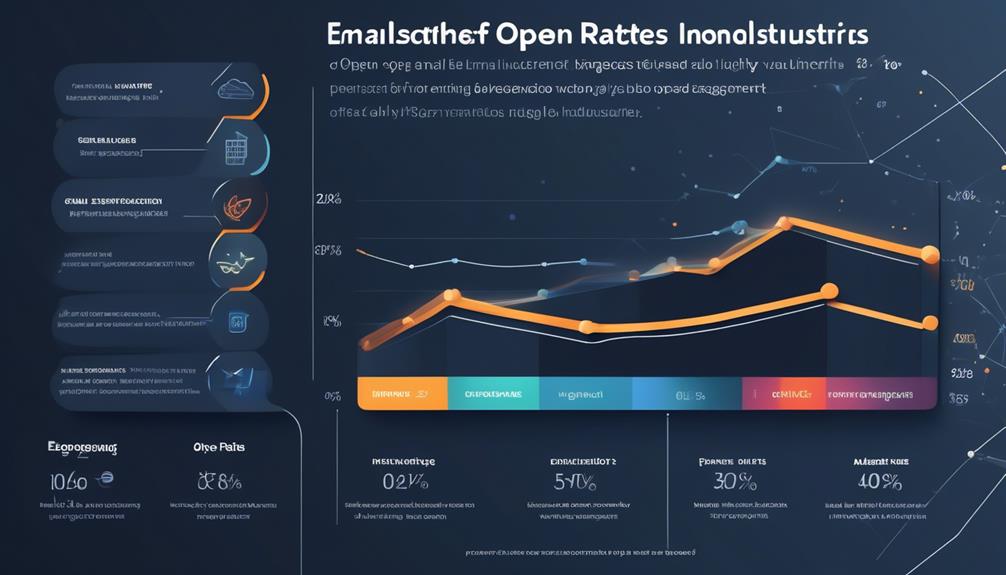
Factors affecting email engagement include the personalization, relevance, and appeal of emails, all of which contribute to higher open rates. It’s crucial to tailor email marketing campaigns to different industries, as this directly impacts email engagement. Understanding unique industry dynamics is essential for success in email engagement. Additionally, factors such as subject lines, sender reputation, email list quality, timing, and mobile optimization significantly influence email open rates. Segmenting email lists, optimizing send times, and experimenting with automation can lead to improved open rates. To provide a clearer understanding, the table below summarizes the key factors affecting email engagement.
| Factors | Impact on Email Engagement |
|---|---|
| Personalization | Increases relevance |
| Relevance | Enhances recipient interest |
| Appeal | Encourages opens and clicks |
| Subject Lines | Influences open rates |
| Mobile Optimization | Catering to mobile users |
Understanding and leveraging these factors will be crucial in achieving above-average open rates and enhancing the overall effectiveness of email marketing campaigns.
B2B Email Open Rate Strategies
Improving B2B email open rates requires implementing tailored strategies that capitalize on the specific dynamics of each industry and leverage key factors such as personalization and compelling subject lines. On average, B2B email open rates hover around 15.14%, slightly lower than the 19.78% average for B2C emails.
To improve your email open rate, it’s essential to benchmark your email campaigns against industry averages. Keep in mind that open rates vary by industry, with sectors like government, medical, dental, healthcare, and animal care generally experiencing higher open rates.
When devising your email marketing strategy for B2B emails, consider the impact of mobile devices on open rates. Ensure that your emails are optimized for mobile viewing to maximize open rates.
Crafting attention-grabbing email subject lines is crucial for enticing recipients to open your emails. Personalization and providing valuable content also play key roles in enhancing B2B email open rates. Experimenting with the timing of your emails can also yield insights into when your audience is most receptive.
It’s important to remember that open rates are just one part of the email marketing puzzle. Consider other metrics like click-through rates and conversion rates to gain a comprehensive understanding of your campaign’s performance.
Calculating and Understanding Open Rates

Understanding open rates is crucial for optimizing email marketing performance and gauging audience engagement. By calculating and interpreting open rates, digital marketers can refine their strategies to improve email deliverability and enhance customer interactions. The table below provides benchmarks for open rates, clickthrough rates, and bounce rates across various industries, offering valuable insights for assessing email list quality and devising effective marketing strategies.
| Industry | Open Rate | Clickthrough Rate | Bounce Rate |
|---|---|---|---|
| Faith-Based Organizations | High | Moderate | Low |
| Nonprofit Membership Organizations | High | Moderate | Low |
| Technology Services | Low | Low | Moderate |
| Transportation Services | Low | Low | Moderate |
| Average Across Industries | 39.7% | 1.0% | 8.4% |
These benchmarks enable marketers to compare their performance with industry standards, identify areas for improvement, and tailor their campaigns for better engagement rates. Moreover, understanding open rates in the context of list churn indicators and email client market share empowers marketers to enhance the effectiveness of their email marketing initiatives. By delving into these metrics and leveraging insights on audience behavior, marketers can elevate their email marketing strategies and achieve greater success in engaging their target audience.
How Can I Improve My Email Open Rates Despite Their Unreliability?
Improving your email open rates unreliable can be challenging, but there are strategies to help. Use attention-grabbing subject lines, personalize your emails, and send at optimal times. Test different approaches and analyze metrics to refine your tactics. Providing valuable content will also entice recipients to consistently open your emails.
Improving Email Open Rates
After analyzing industry benchmarks for open rates, clickthrough rates, and bounce rates, it becomes crucial to strategize methods for enhancing email open rates. To improve email open rates, consider the following strategies:
- Use Personalization: Implement personalized subject lines and content based on subscriber preferences and behavior to increase open rates.
- Optimize Send Times: Utilize data from the Email benchmarking report to identify the best times to send emails for higher open rates, considering time zone differences.
- Implement Marketing Automation: Employ Marketing Automation tools to send relevant and timely emails based on customer actions, thereby increasing engagement and open rates.
- Optimize for Mobile: Ensure that emails are optimized for mobile devices, as Mobile Email opens continue to rise. Employ responsive design techniques to provide a good user experience across devices, leading to improved open rates.
Frequently Asked Questions
What Is a Good Open Rate for Email 2024?
We aim for a good open rate of 20-30% in 2024. Our strategy focuses on optimizing email frequency, crafting compelling subject lines, and timing our email sends effectively. These factors directly impact our open rates, allowing us to gauge engagement.
What Is a Good Email Open Rate Benchmark?
We consider a good email open rate benchmark to be around 20-30%. This range reflects the industry standards and can serve as a guide for evaluating the effectiveness of email campaigns.
It’s crucial to monitor list churn indicators like bounce rates and spam complaints for improved deliverability.
Additionally, click-to-open rates, ideally 10-15%, provide insight into audience engagement with email content.
These benchmarks help optimize email strategies and enhance campaign performance.
Is a 20% Email Open Rate Good?
Yes, a 20% email open rate is good. It signifies solid engagement with your audience. We aim for at least 17-28%, and 20% falls within that range.
It indicates that your emails are resonating with recipients, driving them to open and engage with your content. This level of engagement can lead to increased click-through rates and conversions, making it a positive sign for your email marketing efforts.
What Is a Good Click-Through Rate for Email Marketing 2024?
In 2024, a good click-through rate for email marketing typically ranges between 2.5% to 3.5%. This benchmark signifies strong engagement and effective content.
Our analysis suggests that achieving a click-through rate within this range is a key indicator of successful email marketing campaigns.
It’s essential to monitor industry-specific trends and continuously optimize strategies to enhance performance.
Conclusion
In conclusion, understanding email open rate benchmarks is crucial for optimizing our email campaigns in 2024. By analyzing industry-specific open rates and implementing effective B2B strategies, we can improve engagement and drive results.
Calculating and interpreting open rates allows us to make data-driven decisions to enhance our email marketing efforts.
Let’s strive to surpass these benchmarks and create email campaigns that captivate our audience like a mesmerizing work of art.
Bryn – AI Expert Writer Bryn is the wizard of words and AI at Influenctor. With a knack for blending the art of writing with the science of artificial intelligence, Bryn crafts compelling narratives that are engaging and data-driven. Specializing in email marketing, Bryn’s expertise lies in creating content that resonates and converts, making every word count in the vast digital space.
-

 Email Automation1 month ago
Email Automation1 month agoAutomated Email Marketing 101: A Beginner's Tutorial
-

 Email Warmup1 month ago
Email Warmup1 month agoWarm Follow-Up Email
-

 Email Design Hub2 months ago
Email Design Hub2 months ago3 Essential Tools for Email Marketing Design Success
-

 Email Marketing1 month ago
Email Marketing1 month agoWhat Is Email Marketing Advantages and Disadvantages
-

 Email Marketing1 month ago
Email Marketing1 month agoWhy Email Marketing Is Effective
-

 Email Template1 month ago
Email Template1 month agoCrafting the Perfect Book Club Invitation Email Template
-

 Search Engine Optimization1 month ago
Search Engine Optimization1 month agoSEO Checklist: Enhance Your Site’s Performance
-

 Email Marketing1 month ago
Email Marketing1 month agoDoes Email Marketing Work in 2024





















